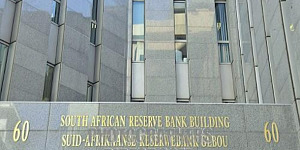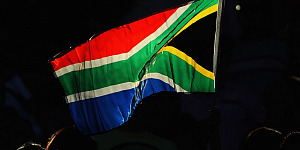South Africa's central bank left its benchmark repurchase rate at 6.50 percent but noted the deteriorating outlook for inflation and raised its implied path of policy rates to five rate hikes by the end of 2020 from four hikes.
The South African Reserve Bank (SARB), which cut its rate by 25 basis points in late March, lowered its forecast for headline inflation this year to 4.8 percent from a previous 4.9 percent but raised the 2019 forecast to 5.6 percent from 5.2 percent and the 2020 forecast to 5.4 percent from 5.2 percent.
SARB said it still considers its policy stance to be accommodative but had noted the deteriorating inflation outlook and said it would not hesitate to act if inflation moves significantly away from the midpoint of its target range of 3 - 6 percent.
The repurchase rate is now seen ending this year at 6.9 percent, up from 6.7 percent previously forecast, and then ending at 7.3 percent in 2019, up from 7.1 percent, and ending at 7.7 percent by the end of 2020, up from 7.6 percent.
"While headline inflation is comfortably within the inflation target band, indications are that we have passed the low point of the current cycle," SARB Governor Lesetja Kganyago said.
Although the impact of an increase in Value-Added-Tax on April 1 on inflation appears to be less than anticipated, Kganyago said a weaker rand and higher oil prices have pushed up the inflation trajectory.
South Africa's headline inflation rate rose to 4.6 percent in June from 4.4 percent in May and is up sharply from 3.8 percent in March.
Since the previous meeting of SARB's monetary policy committee in May, the rand has fallen 7.2 percent against the U.S. dollar and SARB considers it to be undervalued.
But the exchange rate of the rand is expected to remain volatile and SARB forecast the nominal exchange rate would drop by an average of 0.8 percent this year and then a further 4.6 percent in 2019 and another 2.1 percent in 2020.
The rand eased in response to SARB's decision and was trading at 13.5 to the U.S. dollar and is down 8.3 percent this year.
The outlook for South Africa's economy is slightly weaker than SARB had forecast in May, with the economy in 2018 now seen only expanding by 1.2 percent, down from 1.7 percent previously forecast and down from 1.3 percent in 2017.
In the first quarter, the economy shrank by 2.2 percent from the previous quarter.
The forecast for 2019 of 1.9 percent is slightly up from 1.7 percent previously forecast while the 2020 forecast is unchanged at 2.0 percent, helping close the negative output gap.
























































